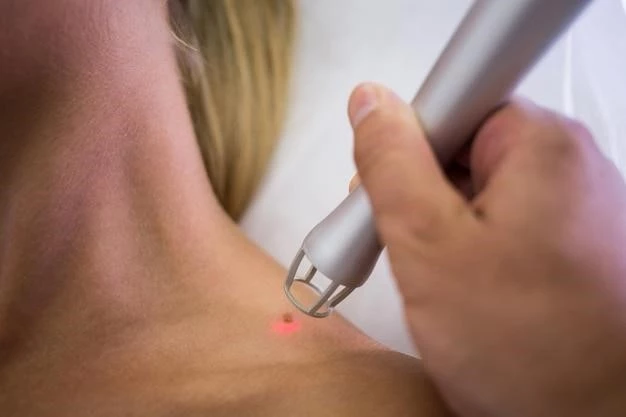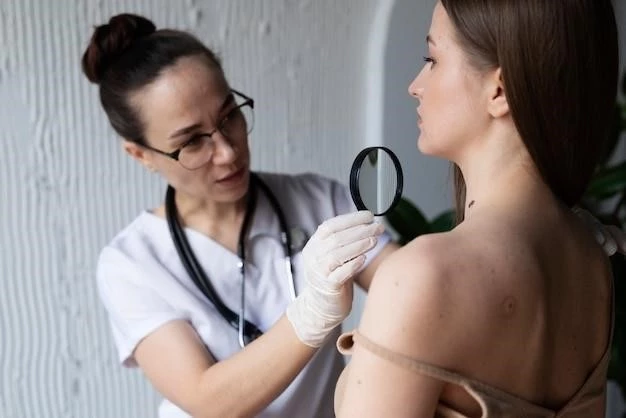Understanding Erythroderma Desquamativa of Leiner
Erythroderma Desquamativa of Leiner, also known as atopic erythroderma, is a severe form of erythrodermic dermatitis primarily affecting infants. This article aims to delve into the causes, immune response, skin barrier dysfunction, diagnosis, treatment options, prognosis, and lifestyle management practices associated with this inflammatory condition.
I. Overview of Erythroderma Desquamativa of Leiner
Erythroderma Desquamativa of Leiner, a rare form of atopic dermatitis, presents as widespread skin inflammation and a significant skin rash in infants. This condition is believed to have a genetic predisposition, with a heightened immune response triggering the inflammatory cascade. Infants with a family history of allergic diseases are more prone to developing erythrodermic dermatitis. The skin barrier dysfunction in individuals with this condition results in increased susceptibility to environmental triggers, exacerbating the inflammatory response. Erythroderma Desquamativa of Leiner is often challenging to diagnose and requires a thorough examination by a dermatologist to differentiate it from other skin conditions. Prompt recognition and appropriate treatment are crucial in managing this severe form of dermatitis. The prognosis can vary depending on the individual’s response to treatment and the presence of complications. Research continues to focus on understanding the underlying mechanisms of this condition, leading to advancements in treatment strategies. Lifestyle management plays a significant role in alleviating symptoms and preventing flare-ups, emphasizing the importance of skincare routines and avoiding known triggers. Support resources such as patient advocacy groups and online forums provide valuable assistance and guidance to individuals and families affected by this rare inflammatory skin disorder.
II. Causes and Triggers
Erythroderma Desquamativa of Leiner, a severe form of atopic dermatitis, is primarily triggered by a combination of genetic predisposition and environmental factors. Individuals with a family history of allergic diseases are at a higher risk of developing this condition due to inherited genetic susceptibility. The immune response in these individuals is hyperreactive, leading to excessive inflammation and skin rash. Specific triggers such as allergens, irritants, and infections can exacerbate the symptoms of erythrodermic dermatitis. Environmental factors like harsh weather conditions, certain fabrics, and stress can also play a role in triggering flare-ups of the condition. The skin barrier dysfunction in individuals with erythroderma desquamativa of Leiner further impairs the skin’s ability to protect against external triggers, making them more susceptible to inflammation. Understanding and identifying these causes and triggers are essential in managing the condition and preventing recurrent episodes. Dermatologists often advise patients to avoid known triggers, follow a tailored skincare routine, and seek prompt medical treatment to minimize the impact of these factors on the skin’s inflammatory response.
III. Understanding Immune Response
The immune response in individuals with Erythroderma Desquamativa of Leiner plays a crucial role in the development and exacerbation of this inflammatory skin condition. Due to a genetic predisposition, the immune system in these individuals overreacts to triggers that would otherwise not cause a significant response in healthy individuals. This heightened immune response leads to the release of pro-inflammatory mediators, causing widespread skin inflammation and rash. The abnormal immune activation seen in erythrodermic dermatitis contributes to the chronicity of the condition and its resistance to conventional treatments. Understanding the intricacies of the immune response in this context is essential for developing targeted therapies that can modulate the inflammatory cascade and alleviate symptoms. Researchers are exploring immunomodulatory treatments to regulate the aberrant immune response in erythroderma desquamativa of Leiner, offering hope for improved management and better outcomes for individuals affected by this challenging skin disorder.
IV. Skin Barrier Dysfunction
Skin barrier dysfunction is a key factor in the pathogenesis of Erythroderma Desquamativa of Leiner. Individuals with this condition often exhibit impaired skin barrier function, characterized by a compromised ability of the skin to retain moisture and protect against external insults. The dysfunctional skin barrier allows for increased transepidermal water loss, making the skin more susceptible to dryness, irritation, and penetration by allergens and irritants. This compromised barrier also leads to dysregulation of the skin’s microbiome, further exacerbating inflammation. Studies suggest that genetic factors contribute to the structural abnormalities in the skin barrier seen in erythrodermic dermatitis, amplifying the impact of environmental triggers on the skin. Understanding the mechanisms underlying skin barrier dysfunction in this context is crucial for developing interventions that target barrier repair and maintenance. Dermatologists often recommend emollients and moisturizers to improve skin hydration and strengthen the skin barrier in individuals with Erythroderma Desquamativa of Leiner, aiming to reduce inflammation and enhance the overall health of the skin.
V. Diagnosis and Differential Diagnosis
Diagnosing Erythroderma Desquamativa of Leiner is often challenging due to its similarity to other inflammatory skin conditions; A dermatologist will conduct a thorough physical examination, review the patient’s medical history, and perform skin tests to identify characteristic features of erythrodermic dermatitis. Differential diagnosis involves ruling out conditions such as psoriasis, allergic contact dermatitis, and other forms of eczema that share overlapping symptoms with Erythroderma Desquamativa of Leiner. Skin biopsies may be necessary to confirm the diagnosis and differentiate it from similar skin disorders. Dermatologists rely on a combination of clinical findings and diagnostic tests to accurately diagnose this rare and severe form of dermatitis. Early and accurate diagnosis is vital in initiating appropriate treatment strategies and preventing complications associated with the condition.

VI. Treatment Options
The treatment of Erythroderma Desquamativa of Leiner aims to alleviate symptoms, reduce inflammation, and improve the overall health of the skin. Dermatologists may prescribe topical corticosteroids to help manage the inflammatory response and promote skin healing. Emollients and moisturizers are recommended to enhance skin hydration and repair the impaired barrier function. In severe cases, systemic medications such as oral corticosteroids, immunosuppressants, or biologic agents may be necessary to control the inflammatory cascade. Phototherapy, involving the use of ultraviolet light, is another treatment option that can help reduce skin inflammation and improve symptoms. Additionally, lifestyle modifications such as avoiding triggers, maintaining a proper skincare routine, and managing stress can complement medical treatments and aid in long-term symptom management. Regular follow-up appointments with a dermatologist are essential to monitor treatment response, adjust medications as needed, and address any emerging concerns related to Erythroderma Desquamativa of Leiner.
VII. Prognosis and Complications
The prognosis of Erythroderma Desquamativa of Leiner varies depending on the individual’s response to treatment and the presence of underlying complications. With proper management, many individuals experience symptom relief and improvement in their skin condition. However, the chronic nature of erythrodermic dermatitis can lead to recurrent flare-ups and long-term skin issues if not effectively controlled. Complications associated with Erythroderma Desquamativa of Leiner may include secondary skin infections, scarring, emotional distress, and impact on the individual’s quality of life. Timely diagnosis, adherence to treatment regimens, and lifestyle modifications can help minimize the risk of complications and improve the overall prognosis for individuals living with this severe form of dermatitis. Dermatologists play a critical role in monitoring the condition, addressing emerging complications promptly, and supporting patients in effectively managing Erythroderma Desquamativa of Leiner.
VIII. Research and Innovations
Ongoing research into Erythroderma Desquamativa of Leiner focuses on advancing our understanding of the underlying mechanisms of this rare inflammatory skin condition. Scientists are exploring innovative treatment approaches, including targeted therapies that aim to modulate the immune response and restore skin barrier function. Clinical trials are investigating the efficacy and safety of novel medications, biologics, and immunomodulatory agents in managing erythrodermic dermatitis. Additionally, research efforts are directed towards identifying genetic markers associated with the condition, offering insights into potential risk factors and personalized treatment strategies. Innovations in skincare technology, such as barrier repair creams and tailored moisturizers, aim to improve skin health and reduce inflammation in individuals with Erythroderma Desquamativa of Leiner. Collaborative research initiatives involving dermatologists, immunologists, and geneticists hold promise for developing cutting-edge treatments and improving outcomes for those affected by this challenging skin disorder.
IX. Lifestyle Management
Lifestyle management plays a pivotal role in supporting individuals with Erythroderma Desquamativa of Leiner. Implementing a consistent skincare routine that includes gentle cleansers, moisturizers, and sun protection can help maintain skin hydration and reduce irritation. Avoiding known triggers such as harsh soaps, allergens, and extreme temperatures can minimize flare-ups and promote skin health. Managing stress through relaxation techniques, regular exercise, and adequate sleep can also benefit overall well-being and potentially reduce inflammation. Dietary modifications like consuming a balanced diet rich in antioxidants and essential nutrients may support skin health and immune function. Consultation with a dermatologist or allergist can provide personalized lifestyle recommendations tailored to the individual’s needs and preferences. By adopting proactive measures and making sustainable lifestyle changes, individuals can effectively manage symptoms and enhance their quality of life while living with Erythroderma Desquamativa of Leiner.
X. Support Resources
Living with Erythroderma Desquamativa of Leiner can pose challenges, but various support resources are available to assist individuals and their families. Patient advocacy groups offer valuable information, community support, and advocacy efforts to raise awareness about this rare inflammatory skin condition. Online forums and social media platforms provide platforms for individuals to connect, share experiences, and seek advice from others facing similar challenges. Dermatologists and healthcare providers can offer guidance on managing the condition and provide referrals to support services such as counseling, mental health resources, and educational materials. Additionally, accessing reliable online resources, educational websites, and reputable medical organizations can empower individuals with Erythroderma Desquamativa of Leiner to stay informed about the latest treatments, research developments, and lifestyle management strategies. By leveraging these support resources, individuals can navigate their journey with this rare dermatological condition more effectively and feel supported throughout their treatment and recovery process.
XI. Conclusion
In conclusion, Erythroderma Desquamativa of Leiner, a severe form of atopic dermatitis primarily affecting infants, presents unique challenges due to its genetic predisposition, immune response, and skin barrier dysfunction. Understanding the causes, triggers, immune mechanisms, and skin barrier abnormalities associated with this inflammatory condition is crucial for accurate diagnosis and effective management. Treatment options, including topical and systemic medications, lifestyle modifications, and advanced therapies, aim to alleviate symptoms and enhance the skin’s health. Despite the complexities of Erythroderma Desquamativa of Leiner, ongoing research and innovative approaches offer hope for improved outcomes and better quality of life for individuals with this rare skin disorder. By emphasizing lifestyle management, accessing support resources, and staying informed about the latest developments, individuals can navigate their journey with Erythroderma Desquamativa of Leiner with resilience and empowerment.
